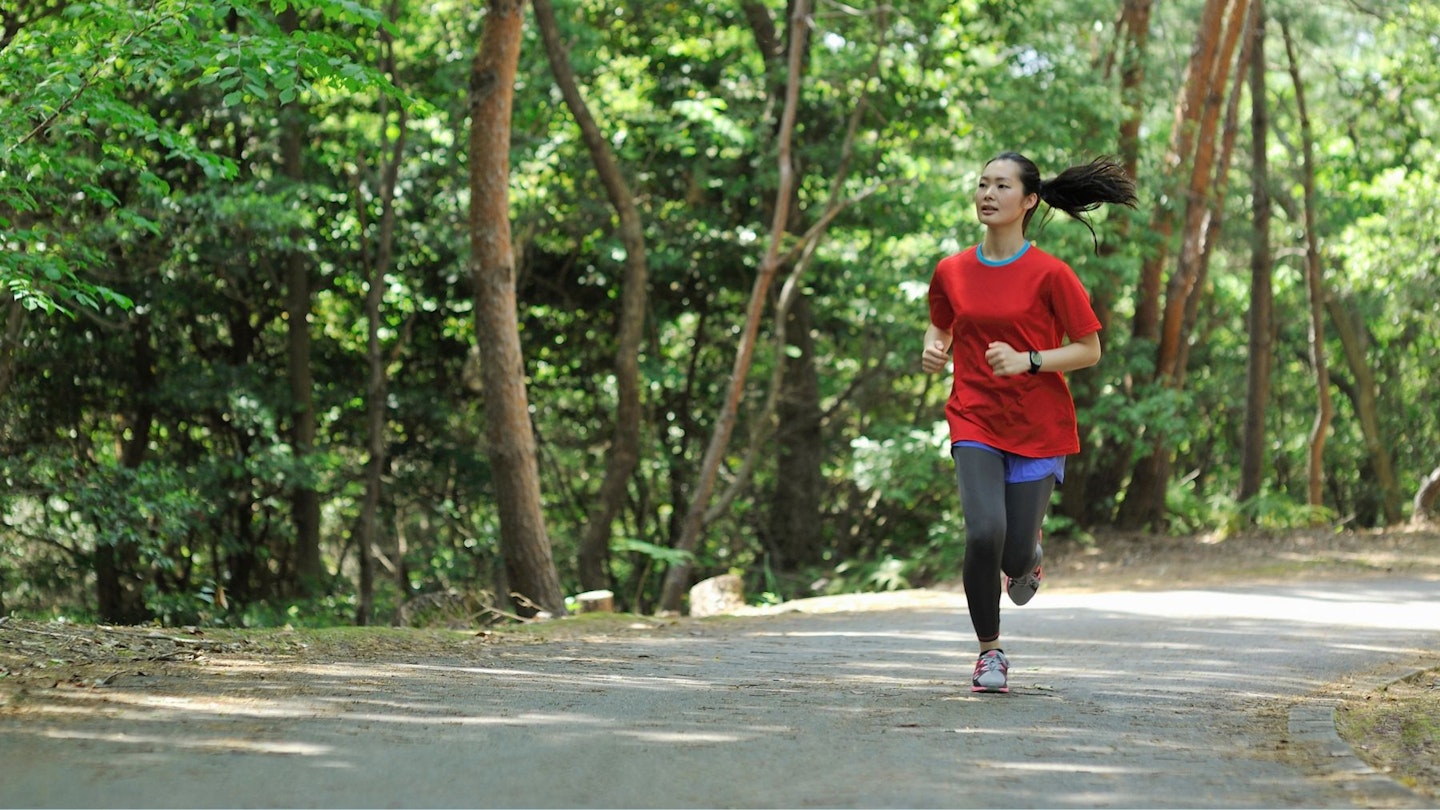It might surprise you to know that your favourite gym wear brands probably aren't as sustainable as you think. If a brand creates eco-friendly fitness apparel it means they make conscious choices to minimise the negative impacts of creating clothes on the planet. But, it goes further than that. It also means sourcing materials from sustainable and renewable sources, minimising carbon emissions and ensuring fair labour practices. And historically, gym clothes haven't been the most environmentally friendly due to the stretchy synthetic fabric they're usually made from, which is heavy in plastics and other oil-derived materials.
The best eco-friendly fitness apparel, at a glance:
• Best eco-friendly leggings: Pangaia Women's Plant-Stretch Compressive Leggings - View on Pangaia
• Best eco-friendly yoga pants: BAM Grace Bamboo Yoga Pants - View on Bamboo Clothing
• Best eco-friendly workout jacket: TALA DayFlex Zip Through Jacket - View on TALA
Now, more people than ever are investigating a brand's ethical practices and the fabric the clothes are made from before making a purchase. This is great because we hold brands responsible and drive positive change in the fitness-fashion industry.
Why should I choose eco-friendly fitness wear?
The most attractive thing about choosing fitness clothes that are made sustainably is that you know you're investing in a piece you'll be able to wear again and again (and again). Think about it: our workout clothes are put up with A LOT. All that sweat, dirt and stretching. Sustainable clothes are made to last and are less likely to stress, rip, or shrink. As a result, you'll save money in the long-run replacing sports bras, gym leggings and workout tops that will just end up in landfill.
It's no secret that the fashion industry are a big polluter. Choosing eco-friendly fitness apparel has a lower environmental impact as they're often made from organic cotton, hemp or even bamboo. With a whopping 90% of activewear being made from plastic that cannot ever biodegrade, it makes a real difference buying from somewhere that doesn't make their clothes from this.
Also, sustainable brands are more likely to pay their workers fairly. Fair Trade guidelines ensure that workers receive fair wages, they're treated ethically and the working conditions are safe. Most eco-friendly brands are transparent about the factories and facilities where their products are made, which means they're probably more ethical.
Buying from an eco-friendly brand will ensure your workout wear will last from one session to the next, have a lower impact on the planet and make sure the people who make your clothes are paid fairly. So, leaving you with a clear conscience, but also with a brand new workout wardrobe.
SHOP: The best eco-friendly fitness apparel
Please note: All prices are correct at the time of writing. Prices, stock and deals are subject to change without notice.
Best eco-friendly leggings
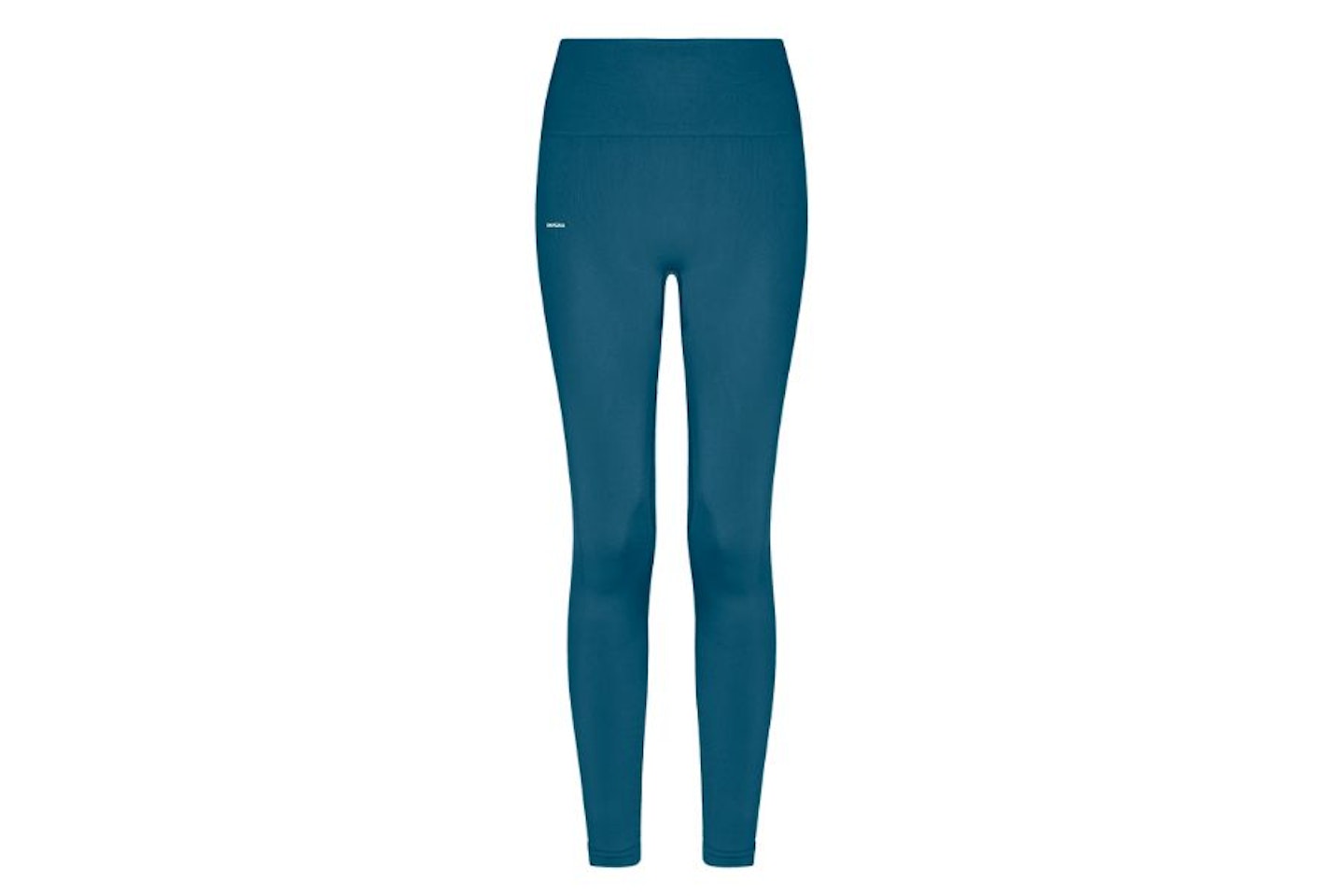 Pangaia
Pangaiapangaia.com
These Pangaia leggings are made from a genius biobased EVO nylon that is derived from castor beans and steers clear of those nasty fossil fuels. Enhanced with a plant-based elastane blend, these leggings offer good stretch and flexibility. With seamless construction, they make you comfortable, perfect for every moment of your day, whether you're working out or unwinding at home. Plus, if you're sick of your leggings smelling sweaty after one gym session, Pangaia have infused their compressive leggings with natural peppermint oil to minimise unpleasant odours.
Pros
- Ribbed waistband for support
- Fits close to the body
- Smooth hand feel and seamless construction
Cons
- Not too compressing on the waist
| Colours | Storm blue, Soil brown, Eucalyptus blue, Black |
| Sizes | XXS, XS, S, M, L, XL, XXL |
| Material | Biobased EVO nylon |
- Customer review: "These Pangaia leggings have a good amount of stretch and compression, and it really holds you in. Slightly thicker than other leggings I have so a little warm for high-intensity exercise but great for yoga, Pilates and lounging at home. I bought a size small and I am a UK size 10 - which fits perfectly!"
Best eco-friendly yoga pants
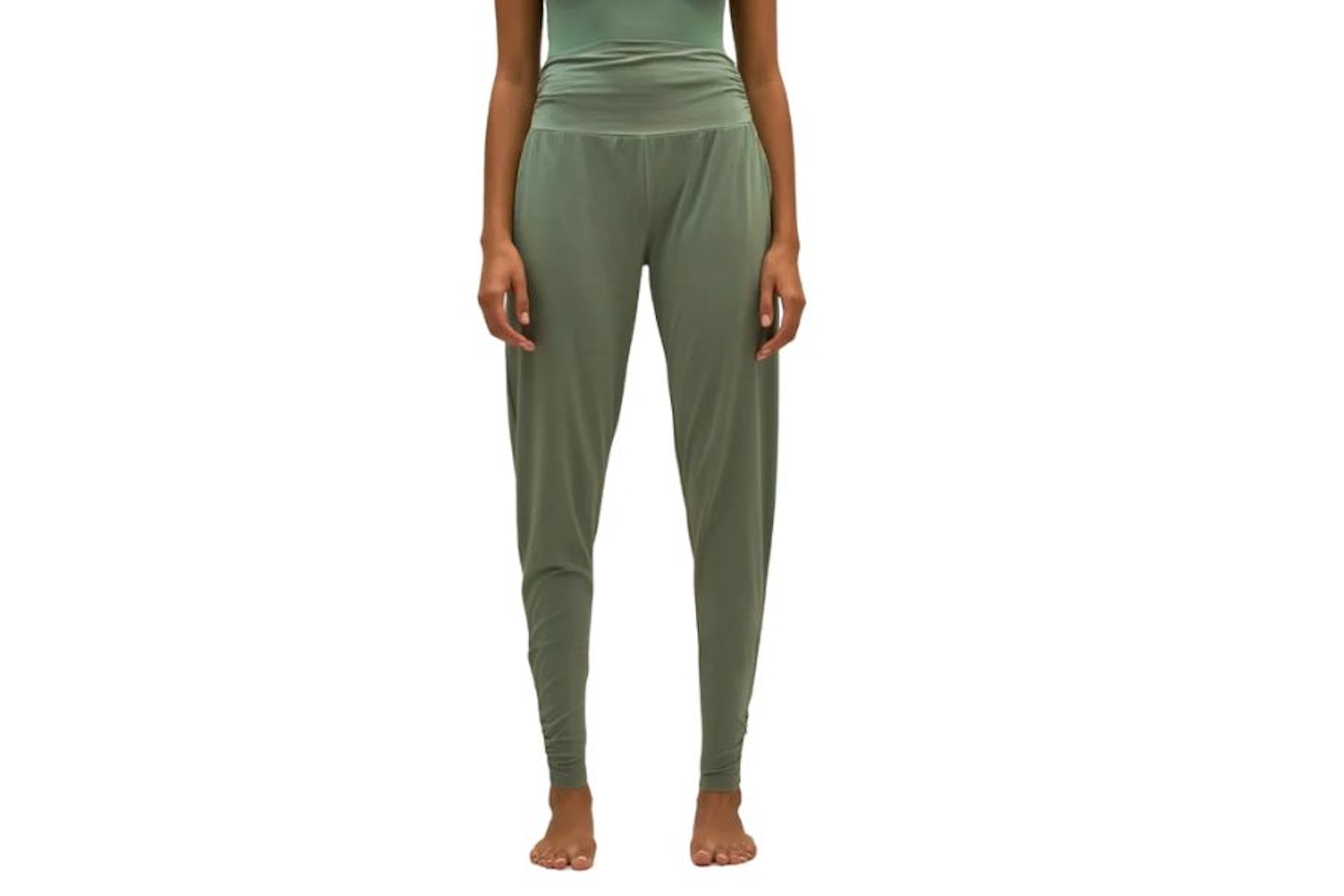 Bamboo Clothing
Bamboo Clothingbambooclothing.co.uk
These Grace yoga pants are great for low-intensity activities like yoga and Pilates. Thanks to Bamboo Clothing's classic jersey, made from a blend of bamboo viscose and organic cotton, they have a soft feel and allow movement. They also feature a double-thickness waistband that won't dig in, and the fabric is cuffed at the bottom for a neat and flattering fit. As an added bonus, they have pockets, too!
Pros
- Soft and stretchy
- Made from a blend of bamboo viscose and organic cotton
- Gathered at the ankle, with pockets
Cons
- Some colours are out of stock due to popularity
| Sizes | 8, 10, 12, 14, 16 |
| Colours | Green, Black, Navy, Mauve, Mink |
| Material | Bamboo viscose, Organic cotton, Elastane |
- Customer review: "Stylish, comfy and cute, need I say more?"
Best eco-friendly workout jacket
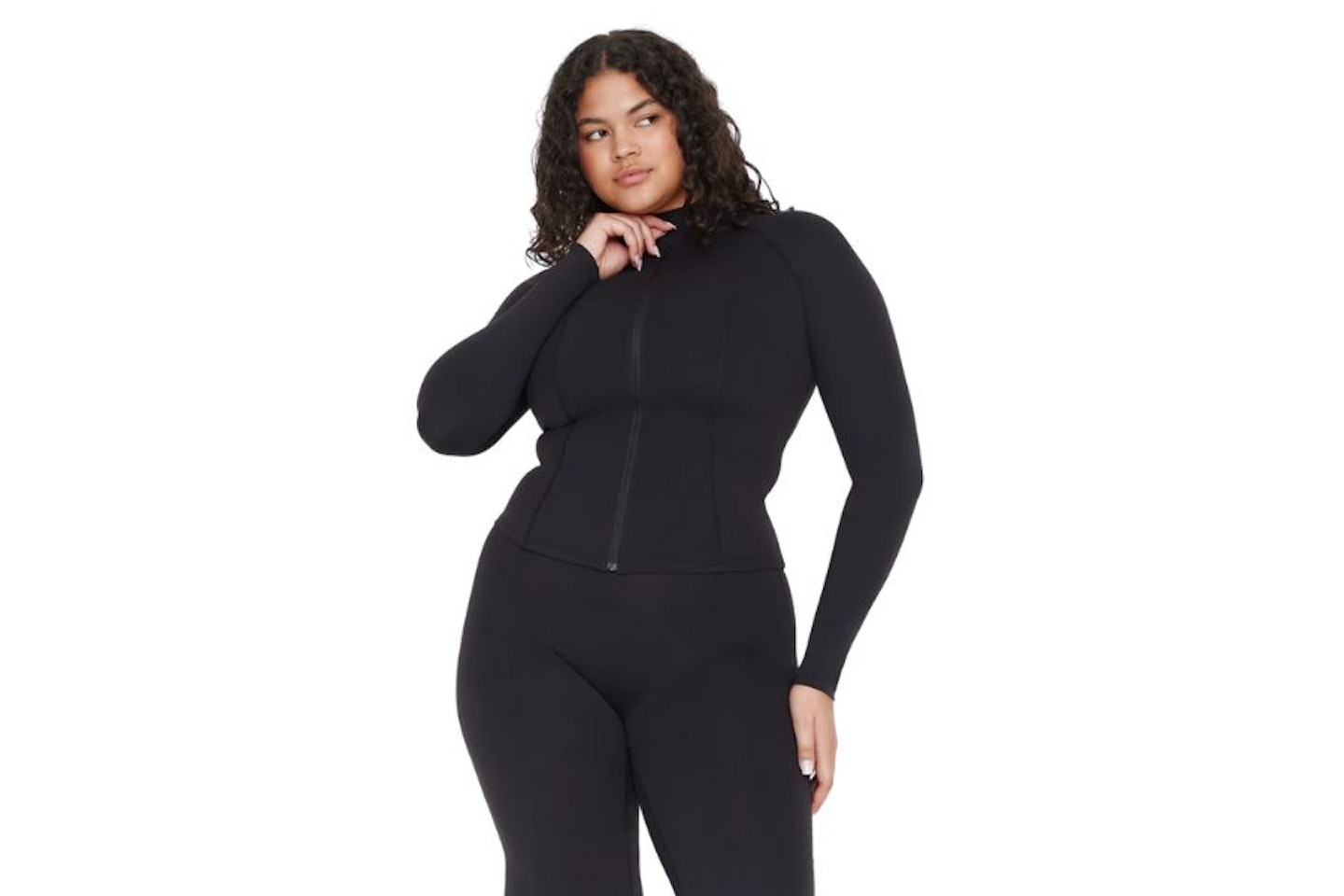 TALA
TALAwww.wearetala.com
These cinching gym jackets are made from 75% recycled nylon, certified by the Global Recycle Standard. Featuring bonded princess seams, a tailored feel, and vertical seams for a contouring fit, this jacket is super flattering. With a full-zip front, it's perfect for pre- and post-workout warmth, albeit it lacks pockets (if you've read any of our articles before, you know how important pockets are), and there's no hood, either.
Pros
- Tapered waist
- Mock neckline
- Flattering vertical seams for a super contoured look
Cons
- No front pockets or hood
| Sizes | 2XS, XS, S, M, L, XL, 2XL, 3XL, 4XL |
| Colours | Black, Grey, Olive, Taupe, Milk |
| Material | Recycled nylon, LYCRA sport |
- Customer review: "The cut and construction of this TALA jacket is so flattering, nothing has flattered my waist more! Waiting to buy another! So comfortable, soft and practical."
Best eco-friendly sports bra
 Organic Basics
Organic Basicsuk.organicbasics.com
Sleek, seamless and buttery-soft, you'll never want to take off this Smooth bralette. Crafted from a mix of recycled nylon and elastane, the bralette is part of the ReSmooth fabric initiative that uses a seamless knitting technique for a low-waste production process. Available in five different colours including a vibrant pink and cool-toned khaki, the Smooth bralette can be paired with leggings of any colour.
Pros
- Full-coverage scoop neck style
- Seamless knit underband for added support
- Made from recycled nylon and elastane
Cons
- The material isn't the most breathable
| Sizes | XXS, XS, S, M, L, XL, XXL |
| Colours | Seaweed, Black, Walnut, Pink, Hazelnut |
| Material | Recycled nylon, Elastane |
- Customer review: "I love the material of this Smooth bralette, feels so good and looks good as well. I sized down 2 sizes (usually I opt for M, I ordered this Bralette in XS), it's tight but in a supportive way and I reckon it will probably get wider over time. I might order a S next time."
Best eco-friendly shorts
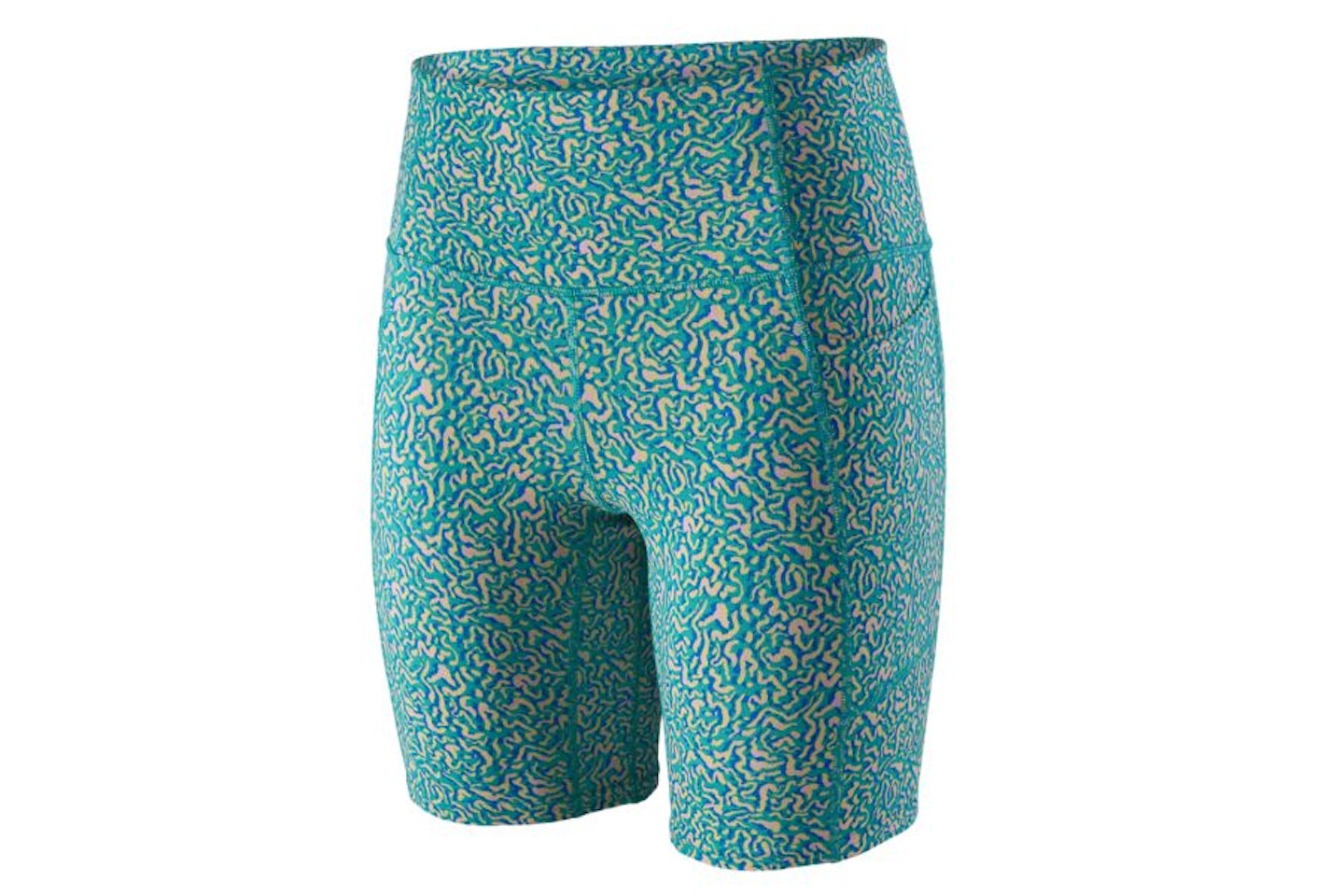 Patagonia
Patagoniaeu.patagonia.com
These Patagonia shorts are cleverly made from recycled nylon that originally came from recycled fishing nets. This superb initiative aims to reduce ocean plastic pollution while still keeping the fabric feeling soft on the skin. With two drop-in side pockets that can fit a phone in or other important items, these shorts have been made in a Fair Trade Certified factory so you know the people who have made the product are getting paid fairly.
Pros
- High-rise
- Folded-over front waistband
- Two drop-in side pockets
Cons
- A little delicate for outdoor workouts
| Sizes | XS, S, M, L, XL, XXL |
| Colours | Blue, Black |
| Material | Recycled nylon, Elastane |
- Customer review: "I've looked at these Patagonia Maipo shorts many times without purchasing and am kicking myself for waiting so long. The fabric is incredibly soft, no chaffing and the shorts stay in place - zero rolling. The fit is flattering with the wide waistband. I loaded up the pockets and the shorts didn't sag during/after a running a handful of trail miles. Really pleased with the quality and fit."
Best eco-friendly workout hoodie
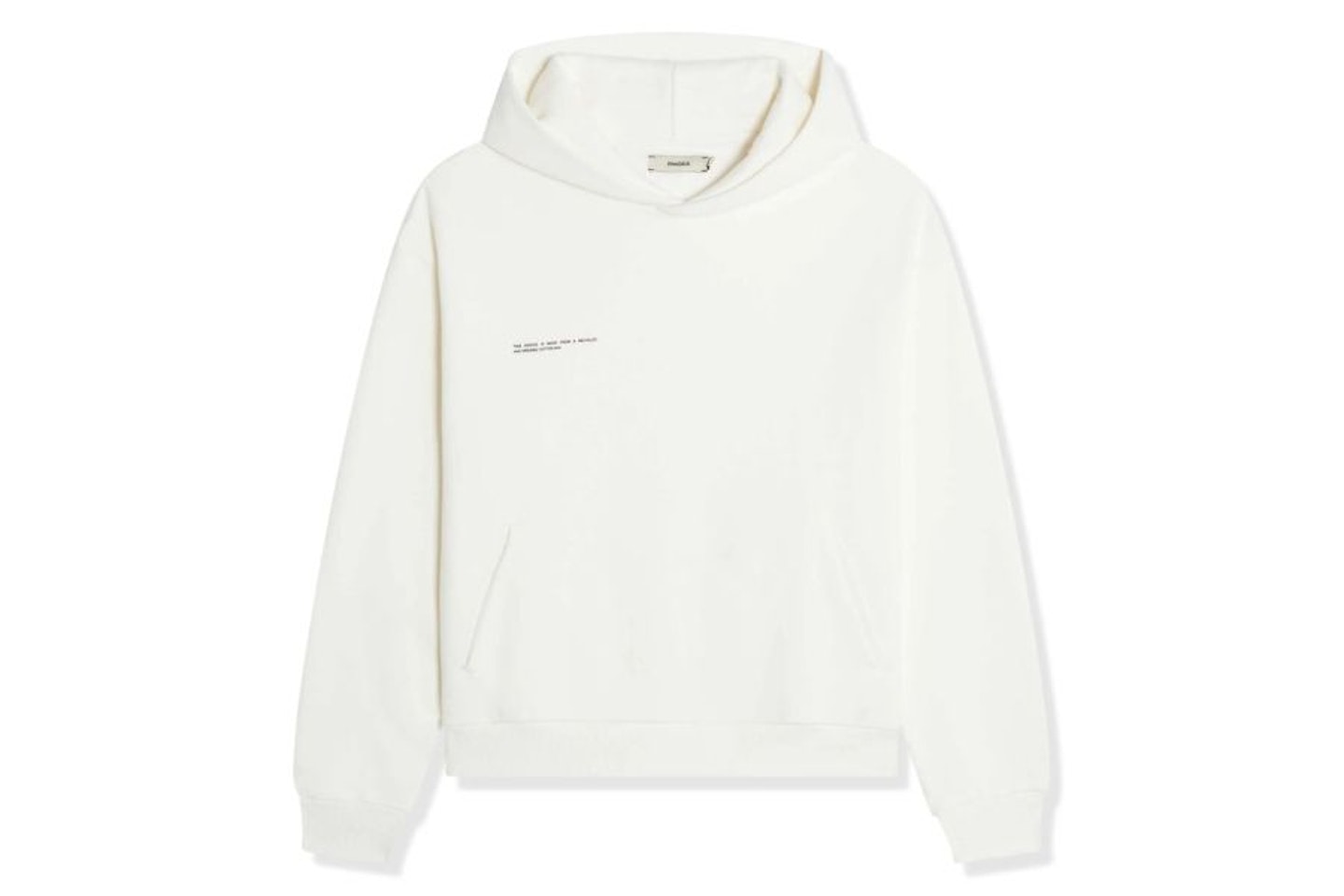 Pangaia
Pangaia pangaia.com
For a workout hoodie that isn't too heavy this Pangaia midweight one is perfect for wearing to and from the gym. It can be worn all year-round, from summer right through to winter as it's made with 320 GSM cotton. And for anti-odour properties, the hoodie is treated with natural peppermint oil to keep you smelling fresh, even after an intense workout. Plus, the 365 hoodie is genderless so it can be worn by absolutely everyone.
Pros
- Unisex hoodie
- Medium weight so not too thick
- Fitted cuffs and hem
Cons
- You might struggle to get your hands on some colours as they're often out of stock
| Sizes | XXS, XS, S, M, L, XL, XXL |
| Colours | Various colours available, including: Off-white, Black, Green, Grey, Cobalt blue |
| Material | Cotton |
- Customer review: "The Pangaia 365 hoodie is super comfy, stylish and big eco credentials. What's not to love!"
Best eco-friendly men's shorts
 Bamboo Clothing
Bamboo Clothingbambooclothing.co.uk
These shorts strike the ideal balance between a suitable length and functionality, featuring an elasticated waist with a contrast drawcord. Designed for action, the Brook Active shorts boast two discreet zip pockets on each hip, a crossover side hem, and the signature BAM icon detailing. It's made from a lightweight fabric blend of bamboo viscose, organic cotton and elastane for ample stretch and unrestricted movement.
Pros
- Features two concealed zip pockets
- Comfortable and lightweight
- Crossover side hem
Cons
- Only available in two colours: navy and green
| Sizes | S, M, L, XL, XXL |
| Colours | Navy, Green |
| Material | Bamboo viscose, Organic cotton, Elastane |
- Customer review: "I bought a pair of the Active Sweat shorts for my son who loves them. Great fit."
Best eco-friendly men's t-shirt
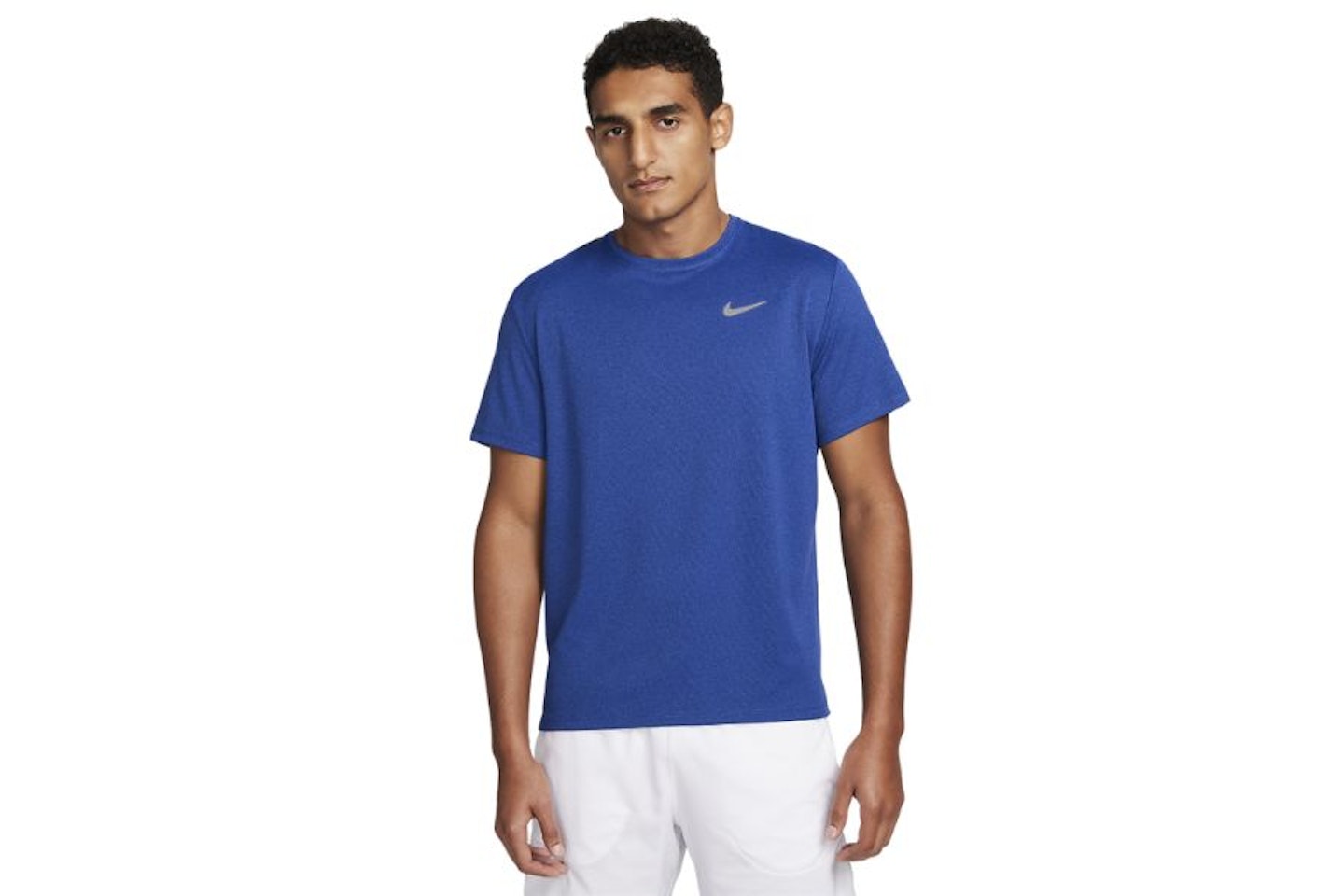 Nike
NikeCrafted with sweat-wicking Nike Dri-FIT technology, this top swiftly removes moisture from your skin, keeping you dry and focused. Its extended length and feather-light fabric offer extra coverage. Also, bask in the added shield of UV protection against the sun's rays as you conquer the miles. Detailed with a reflective Swoosh and made from 100% recycled polyester, this top is durable, easy to wash and simple to care for.
Pros
- Ultra-lightweight knit fabric for a cool, smooth sensation
- Provides UVA and UVB protection from the sun
- Nike Dri-FIT moves sweat away from your skin for quicker evaporation
Cons
- Material is too thick for summer running
| Sizes | S, M, L, XL, XXL |
| Colours | Various colours available, including: Blue, White, Grey, Black, Green |
| Material | Recycled polyester |
- Customer review: "I bought this Nike Miler top at the beginning of February, and I really enjoy it. I have it in different colors, and it is perfect for a run outside. It was incredibly breathable and easy to move in, and it also protected me from the sun very well. I was a bit worried that since it provided UV protection it’s be thick, but I was able to run 2.5 miles comfortably."
Best eco-friendly men's base layer
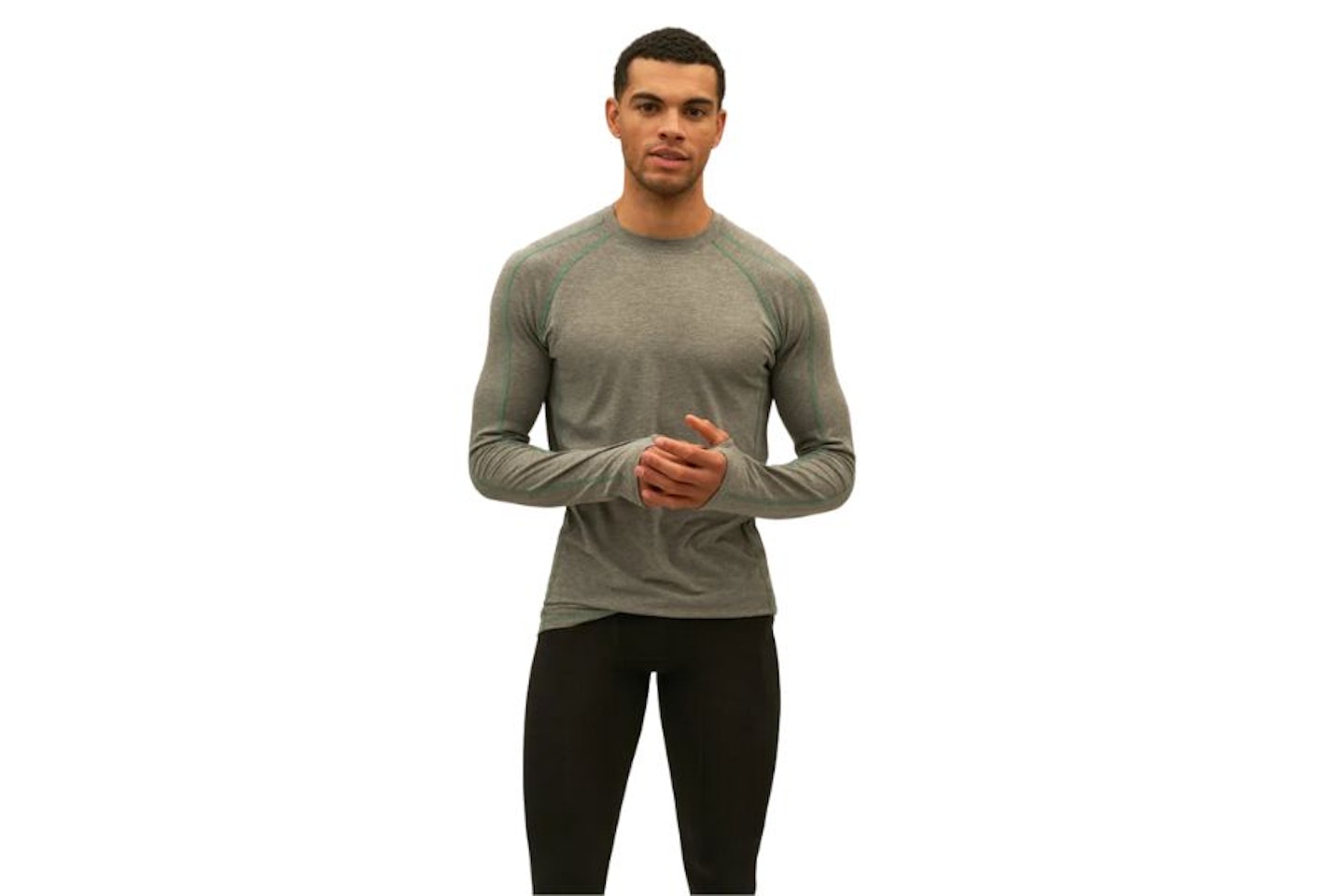 Bamboo Clothing
Bamboo Clothingbambooclothing.co.uk
This Bamboo Clothing Crew Neck could be a great choice for a bamboo base layer that's longer in the body. With a super soft, super stretchy but breathable fabric, it's extremely comfortable for working out in, and it allows for freedom of movement. If you prefer a little more coverage on your hands, this top has long sleeves and handy thumb loops to keep you warm on those chillier days.
Pros
- A soft and comfy base layer
- Features flatlock stitching that won't chafe
- Extremely stretchy
Cons
- Thumb loops aren't for everyone
| Sizes | S, M, L, XL, XXL |
| Colours | Grey, Black, Dark spice |
| Material | Bamboo viscose, Organic cotton, Elastane |
- Customer review: "The BAM base layer is very comfortable and I like the colour."
Best eco-friendly men's shirt for moisture-wicking
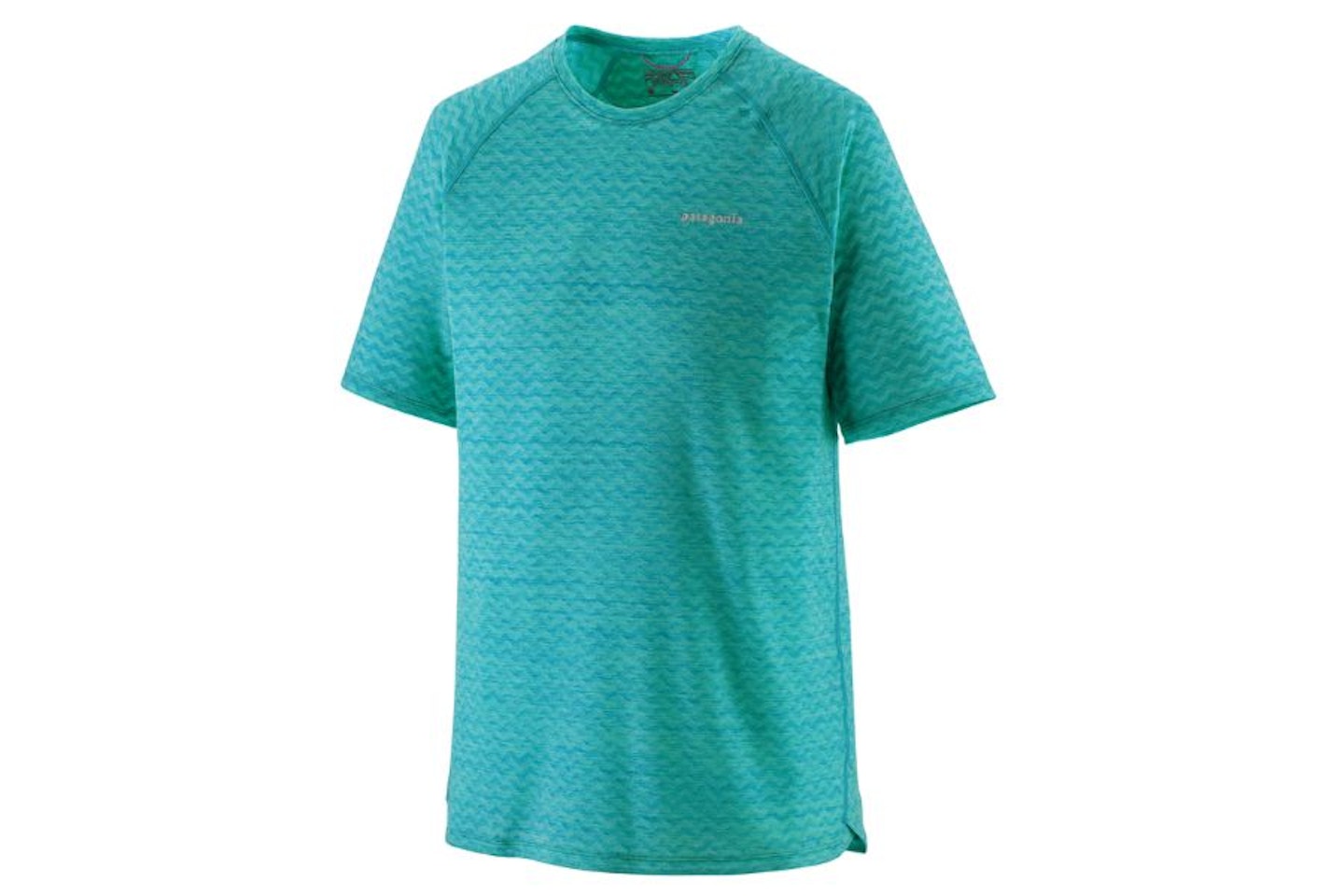 Patagonia
Patagoniaeu.patagonia.com
With a lightweight 100% recycled fabric, this Patagonia Ridge Flow shirt is perfect for intense workout sessions. The best features of this shirt include a next-to-skin feel, side vents for an improved fit and ventilation, and a reflective logo that increases visibility for evening running. If you're often finding your workout wear is getting a little smelly, this fabric is treated with patented HeiQ Pure odour control for long-lasting freshness.
Pros
- Lightweight, 100% recycled fabric
- Next-to-skin feel
- Side vents for an improved fit
Cons
- Only available in three colours: blue, black and red
| Sizes | XS, S, M, L, XL, XXL |
| Colours | Blue, Red, Black |
| Material | Recycled polyester |
- Customer review: "The Ridge Flow shirt is my new favourite workout top. Super breathable and most importantly comfortable. It's form fitting but loose enough where it needs to be for full range of movement. Whether I'm running, hiking, or playing basketball, this shirt has become my new workout go-to. I will definitely be picking up more in different colours."
Eco-friendly fitness apparel: A buyer's guide
With more and more brands offering sustainable gym wear, or at least, partly sustainable workout wear (brands like Adidas and Nike have introduced eco-friendly initiatives but are yet to make their entire brand more conscious) it can be difficult to decipher bamboo from recycled nylon.
Our buyer's guide is here to clarify any worries you might run into when searching for a new workout wardrobe, or if you're worried about what to wear to a gym session.
What is the best natural fabric for athleisurewear?
When it comes to choosing a fabric for your sustainable athleisurewear, bamboo is the frontrunner. Renowned for its luxuriously soft texture and ability to keep you cool during sweaty workouts. Bamboo is also surprisingly sweat-wicking, as the material works to swiftly absorb sweat. Plus, it boasts natural antibacterial properties, combatting odour-causing bacteria to keep you smelling fresh all day long.
An alternative to bamboo is organic cotton, which has great eco-credentials as it's made without the use of harmful pesticides or synthetic fertilisers. Its cultivation prioritises soil health and biodiversity, fostering a better relationship with the environment. The feel of organic cotton itself is smooth, soft and breathable, which makes it great for workout wear.
Furthermore, there are a couple of other alternatives; like hemp or recycled polyester, but bamboo and organic cotton are two of the most common.
What fitness brand is the most environmentally friendly?
Pangaia is one leading fitness and athleisurewear brand that are extremely popular for both women's gym clothes and men's too. With their focus on eco-friendly materials and an ethical practice, Pangaia's environmental rating is 'good'. To make their clothes, this sustainable brand uses offcuts to minimise textile waste and they use natural dyes in most products. In addition, their packaging is compostable to ensure no cardboard or paper goes to waste. Other brands that deserve a mention are Patagonia, BAM Clothing and influencer Grace Beverley's brand TALA.
Why is eco-friendly fitness apparel more expensive?
Sustainable fitness wear often has a higher price tag due to the processes and premium materials that are involved in the production. Unlike fast-fashion activewear, which may prioritise cost-cutting measures to make their items cheaper for the buyer, eco-friendly brands will invest in sustainable sourcing, ethical labour practices and manufacturing techniques. For example, organic cotton and recycled polyester will be more expensive than ordinary cotton and polyester.
Additionally, certifications and standards that ensure a brand is being honest about their eco-friendliness require additional investments. Fair Trade or the Global Organic Textile Standard (GOTS) is a great label to have, but it comes at an extra cost.
Although the initial price of eco-friendly fitness apparel may be higher, investing in sustainable clothing is not just a singular purchase. It's a commitment to sustainability, ethical practices and the health of both people and the planet.
Gemma Lavers is a Health & Fitness Writer for What's The Best. From understanding nutrition to practising yoga and Pilates to delving into the psychology of motivation. She enjoys demystifying the latest fitness trends and staying on top of the dynamic health landscape, whether that's the best gym leggings, fitness trackers or the benefits of yoga.
When Gemma’s not writing, she can be found attending Pilates, yoga and Zumba classes. She’s also a bit of a home workout aficionado, constantly trying out new ways to keep her moving at home. Between writing, exercising and shopping, there’s nothing she loves more than hopping on a plane and exploring new cultures.
Subscribe to the What’s The Best Newsletter to keep up to date with more of the latest reviews and recommendations from the rest of the What’s The Best team.
